The Digital Reader |
- The Morning Coffee – 25 February 2014
- Smashwords Authors Hit New Milestone: 10 Billion Words Published
- ReadK.it Offers a New Way to Read & Share Epub eBooks in Your Web Browser
- Panasonic Adds Ruggedized 5″ Tablets to the ToughPad Line
- The FingerReader Picks up Where Braille Leaves Off (video)
- New Yotaphone Boasts Larger E-ink, LED Screens and a Sleeker Design
- Amazon, please unmute the Kindle: No need for the workaround shown in this video, when TTS chips cost next to nothing!
- Samsung’s Gear 2 Smartwatches Get Their First Vaporware Reading App
| The Morning Coffee – 25 February 2014 Posted: 24 Feb 2014 09:32 PM PST Top stories this Tuesday morning include audiobooks (link),Worldreader’s new ereader initiative in Tanzania (link), consolidation in digital publishing (link), how to tell whether you’re in a Dashiell Hammett novel (link), and more.
The post The Morning Coffee – 25 February 2014 appeared first on The Digital Reader. |
| Smashwords Authors Hit New Milestone: 10 Billion Words Published Posted: 24 Feb 2014 03:14 PM PST 2014 is less Smashwords announced on Monday that the 87 thousand authors and publishers who were distributing their works via Smashwords had collectively published a grand total of 10 Billion Words:
If a person could type 30 words a minute, 24 hours per day, it would take a single individual 5.6 million hours of writing, or about 630 years without a break, to type this many words. You’d have to start sometime in the 1380s and work without sleep for the next 6 plus centuries in order to match what Smashwords authors have accomplished in only 6 years. To echo what I wrote when Smashwords hit 5 billion words, can you imagine how many keyboards this must have taken? I have a pattern of killing 2 to 3 keyboards every couple years, so we would be looking at somewhere around 1,500 keyboards, give or take a few. We’d be looking at a large enough collection of keyboards to cover an area larger than my first and second apartments combined (1,125 square feet).
The post Smashwords Authors Hit New Milestone: 10 Billion Words Published appeared first on The Digital Reader. |
| ReadK.it Offers a New Way to Read & Share Epub eBooks in Your Web Browser Posted: 24 Feb 2014 11:42 AM PST eBooks ReadK.it is an open source project which crossed my desk for the first time last week. It uses standard web tech like HTML, Javascript, and CSS3 to enable readers to open Epub ebooks in their web browsers. I know that doesn’t sound like much given that similar projects like Monocle and Ibis Reader have offered similar abilities since 2010, but ReadK.it has a number of advantages that its competitors lack. It’s open source while Ibis Reader is both proprietary and deceased (its developer was acquired by Safari Press in 2012 and Ibis Reader was killed in June 2013). And while Monocle is also open source, ReadK.it offers a few tricks that Monocle lacks. For one thing, ReadK.it has the option of being bundled inside an Epub (enabling you to put the reading app inside the ebook instead of the other way around). Unzip the file, load ReadK.it’s index.html file, and you can read any DRM-free ebook simply by dragging and dropping the Epub file in your web browser. All the files needed to read that Epub are contained in the Epub file you downloaded, and they take up so little room that you can readily include them in every Epub. And that’s not the only option. You can also download that reading app as its own HTML file; it’s about 1MB in size. Compared to most Epub reading apps that is a very small app, that goes double when you consider the fact that it should work in any web browser on any platform. There’s also ReadK.it Library, which is a nifty little carousel-based library management tool which runs in your web browser: All in all, on a technical level this is a very nifty project and on a practical level it should prove very useful. It’s going to give everyone another option for distributing and reading Epub ebooks. If you haven’t checked it out yet, you should. The post ReadK.it Offers a New Way to Read & Share Epub eBooks in Your Web Browser appeared first on The Digital Reader. |
| Panasonic Adds Ruggedized 5″ Tablets to the ToughPad Line Posted: 24 Feb 2014 09:53 AM PST Panasonic The FZ-E1 and FZ-X1 have similar looking hardware, but are actually quite different. The both have 5″ screens (1280 x 720 resolution) and a rugged shell, but one runs Windows Embedded (Windows Phone) while the other runs Android 4.2.2 Jelly Bean. The Windows-powered FZ-E1 runs on a 2.3GHz quad-core Qualcomm Snapdragon 800 processor, while the FZ-X1 uses a 1.7GHz quad-core Qualcomm Snapdragon 600 chip to run Android. Both models have 2GB RAM, 32GB Flash storage, and a couple cameras (1.3MP and 8MP). They also have LTE, WCDMA, EV-DO, and3G connectivity as well as Wifi and Bluetooth. In terms of battery life, the removable battery is rated for 6.2Ah, with Panasonic claiming 14 hours of continuous use or 1,000 hours of standby time.    Like all tablets in Panasonic’s ToughPad range, these smartphones are designed to survive drops of up to 10 feet, and you can dunk them underwater to a depth of 1.5 meters for up to half an hour. And like their larger brethren, the FZ-E1 and FZ-X1 are designed to be bolted to other equipment using fixing screws. The post Panasonic Adds Ruggedized 5″ Tablets to the ToughPad Line appeared first on The Digital Reader. |
| The FingerReader Picks up Where Braille Leaves Off (video) Posted: 24 Feb 2014 08:54 AM PST
While many books have already been digitized, sometimes the visually disabled can’t access them and sometimes a title might not be available at all. That’s where the FingerReader comes in. The FingerReader is the latest project to come out of the MIT Media Lab. It combines a camera mounted in the white ring shown at right with OCR software running on a PC. The user merely points at the words they are trying to read and the FingerReader scans it, coverts the image to text, and says it aloud. Here’s the Media Lab explaining the project:
As you can see in the video below, the prototype doesn’t work very well. Even though they’ve been working on similar projects for at least a couple years, it’s still slow and somewhat inaccurate (and in dire need of a better voice synthesizer). There’s no plans as of yet to develop this into a commercial product, which is probably a good thing. It’s a rather clunky and expensive way to solve a problem few have, and I think developing similar tech based on a smartphone would be both more cost effective and more fucntional. In fact, for the most part that tech already exists. iPhones and most Android smartphones already have the camera and TTS which would be needed for this project, and they’re pretty good too. All that is missing is an app to covert what the camera sees into text which could be spoken aloud. An app like this, or this, or this, would fit the bill nicely. They already do pretty much everything that the FingerReader can do, rendering this project redundant. The post The FingerReader Picks up Where Braille Leaves Off (video) appeared first on The Digital Reader. |
| New Yotaphone Boasts Larger E-ink, LED Screens and a Sleeker Design Posted: 24 Feb 2014 07:04 AM PST Just The Yotaphone 2 improves upon its predecessor by combining larger and higher resolution screens with a rounded design. Gone is the iPhone-esque slab; it’s been replaced by a design more closely resembling the work of Samsung. As has been widely reported, the Yotaphone’s claim to fame is a unique pairing of a traditional LED screen and an E-ink screen on a single smartphone. The Yotaphone 2 sports a 5″ AMOLED and a 4.7″ E-ink screen, both a huge step up from the 4.3″ screens on the original. The AMOLED screen has a screen resolution of 1920 x 1080. It’s not the sharpest screen on the market but it’s up there in the stratosphere. The E-ink screen, on the other hand, has a resolution of 960 x 540. That’s a common enough screen geometry for smartphones, and that should make it easier for developers to create and port apps which make use of the Yotaphone’s second screen. That’s going to be good news for users; there are currently around a dozen apps for the original Yotaphone which make full use of the E-ink screen on the back. The new model also has a full touchscreen on the E-ink side, and not just a small panel below the screen. Yota Devices is also reportedly working on a design with a front-lit E-ink screen, though that isn’t on display this week. The new Yotaphone is going to run the latest version of Android on a quad-core SnapDragon 800 CPU with 2GB RAM, 32GB Flash storage, a pair of cameras (8MP and 2MP), and support for Wifi, Bluetooth, and GMS and HSDPA cell networks.   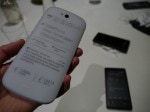 It’s hoped that the new Yotaphone will ship in Europe and Asia by the end of 2014. Yota Devices is also working on versions of the device for the US market and for China which they plan to ship by the end of 2014 or the beginning of 2015. The price tag has not been revealed yet but Yota Devices spokespersons have said it will be comparable to premium Android smartphones from the likes of Samsung, HTC and Sony. The current model Yotaphone costs 500 euros, and according to earlier press reports around 12 thousand have been sold since it shipped 2 months ago. Specs The post New Yotaphone Boasts Larger E-ink, LED Screens and a Sleeker Design appeared first on The Digital Reader. |
| Posted: 24 Feb 2014 06:01 AM PST At first glance, the MIT-designed FingerReader shown in this video looks intriguing for people with print-related challenges. But major catches exist, beyond the robotic voice. Using the little text to speech reader is slow going, as you'll notice if you play the video below. If nothing else, why must even experimenters feel compelled to try the FingerReader on the popular Amazon Paperwhite or other ereaders without text to speech? Shouldn't the ereader gadgets have TTS in the first place? Without a loudspeaker or at least a headphone jack, the Paperwhite can't offer even a primitive equivalent of Apple's Voiceover. Amazon spruced up the Paperwhite's recent predecessors with text to speech; why the exception? A solution would be easy. Just give the Paperwhite text to speech. You don't need a lab full of MIT Ph.D.s, or even one such brainiac, to puzzle this one out. The cost would be only a few dollars at the most and perhaps just a fraction of that. I hope that the FCC, which has shown an interest in these matters, will crack down severely on Amazon if it isn't more decent here. FCC should go nuclear if Amazon won't actNo, I haven't the slightest problem with a bit of a delay to let Amazon tweak the Paperwhite. But after that, the FCC if need be should go nuclear. The American Library Association, as a long-time advocate of accessibility, should continue to bird-dog these issues, given the large number of library patrons dependent on Kindles. Aren't there regulations anyway to promote accessibility of library-purchased computers—even if most people rely on their own ereaders and other devices? For good measure the ALA and the FCC should lean on Amazon and other companies to offer a good all-bold text option (if possible with adjustable font weights) to help readers who prefer high-contrast black on white. Such a change would also allow people to use less battery power. My hope is that Amazon CEO Jeff Bezos and rivals will be smart enough to stay ahead of the feds, the ALA and public opinion. Other Amazon products are more friendly than before to people with disabilities. Let's see some progress here, too, Jeff! Callous and bad for businessIf Amazon can't bear the thought of a loudspeaker adding even a tiny amount of size or weight, it should at least include a slim headphone jack. Instead of listening to mediocre TTS, people with disabilities could enjoy stellar voices from Ivona, a subsidiary of Amazon. My favorite Ivona voice is the incredible British-accented "Amy" (follow the link to hear her). Why is Amazon so callous toward the sight-impaired, given all the good that corrective measures could do? Absence of TTS from the Paperwhite is actually bad business. Plenty of Amazon customers without serious sight impairments or other disabilities could benefit from TTS during commutes or exercise sessions, and they might not even grasp the possibilities if TTS didn't exist on their machines to begin with. Devoted Amazon fans could start books at home and continue them on the road. Result? More time for reading—and a bigger market for the books Amazon sells. Simply put, TTS is a way for books as a medium to be more competitive. The benefits of universal TTS will far, far outweigh losses from sales of professionally narrated audio books. Who knows? They might even help them in some cases. No one can do a human act better than a human, and TTS is a great way to promote the benefits of listening when tradition reading isn't easy or even possible. eReaders vs. Tablets: The cost factor Here's something else to consider. For many reasons, including cost, dedicated E Ink readers like the Paperwhite may be better for many ebook-lovers than Fire-style tablets would be. Isn't Amazon supposed to be a customer-centric outfit? Why must marketers' dogmas of segmentation—or whatever the excuse—come ahead of the needs of real humans living on tight budgets? Related: TechCrunch report on the Paperwhite update rumored for 2014. No TTS mentioned in the article itself, alas—although at least two commenters want it back. Note: First, I can't guarantee that the gizmo in the video is a Paperwhite (it could be or a model with similar looks). Just the same, the big point here remains: this is an inelegant, kludgish way of offering TTS. Second, I heartily approve of the existence of the FingerReader and assume that the MIT researchers want it to be a lot better. That's not the point here. Rather, it's to show the cruelty and stupidity of muting the Paperwhite. Third, let me make it clear I'm in many ways pro-Amazon. On the whole I'm a fan of the company's hardware except for the TTS issue and, of course, the highly proprietary tech and related problems that come with Kindles (just try buying the wonderful Manto ebook reader from the Amazon app store for a Fire HDX—even though the Amazon-supplied version will work on many other machines, and will on the Fire itself if you install it from other sources). reposted under a CC license from Library City The post Amazon, please unmute the Kindle: No need for the workaround shown in this video, when TTS chips cost next to nothing! appeared first on The Digital Reader. |
| Samsung’s Gear 2 Smartwatches Get Their First Vaporware Reading App Posted: 24 Feb 2014 05:46 AM PST There’s Initially launched for the Gear 2 smartwatches and the Samsung S5 smartphone (two devices which were just announced themselves), the first Spritz app is described as an email app that helps readers by automatically centering the text of an email. Yes, this is an email app and not an app for ebooks, but I found the idea interesting enough to be worth a mention. If this app proves practical for emails then it might also be useful for ebooks and other types of reading. According to the press release:
The less technical explanation is that by carefully controlling the position of words, the Spritz app will make it easier for you to scan the text and integrate the information faster. That’s potentially a useful idea, but there are a few problems with it. For one thing, the app is being launched for 2 devices that aren’t actually available yet. At a minimum that makes this app vaporware, but it also means that there’s no way for anyone to make sure that Spritz has any actual tech ready to ship. It also means that Spritz doesn’t even know if they have any tech ready to ship; they haven’t had a chance to test the app on the S5 and the Gear 2. Why didn’t they launch an app for a device that exists, thus giving us a chance to test the idea today? My concern is that the tech doesn’t exist, and that’s why I’m not going to get too excited about it. I also wonder why this app is going to work on the Gear 2. Does anyone actually read on a screen the size of a smartwatch? Sure, you’d read notifications, IMs, and possibly tweets, but emails? I seriously doubt it; most are simply too long to read comfortably on a 1.63″ screen. So why would anyone need a specialized app to read them? In fact, why would you need a specialized app to read emails on a smartphone (especially one which won’t help you to respond to emails faster)? Aside from those with screen or light sensitivity issues, I don’t know anyone who has had trouble reading the text of emails on a smartphone screen, not even smaller smartphones. In fact, I know a couple people who only send and receive emails from their smartphone. They really don’t seem to be inconvenienced by the layout of the text. What do you think? Am I crazy to have all these doubts? The post Samsung’s Gear 2 Smartwatches Get Their First Vaporware Reading App appeared first on The Digital Reader. |
| You are subscribed to email updates from The Digital Reader To stop receiving these emails, you may unsubscribe now. | Email delivery powered by Google |
| Google Inc., 20 West Kinzie, Chicago IL USA 60610 | |
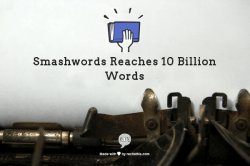
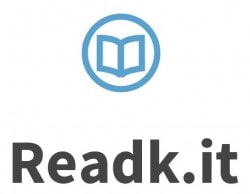
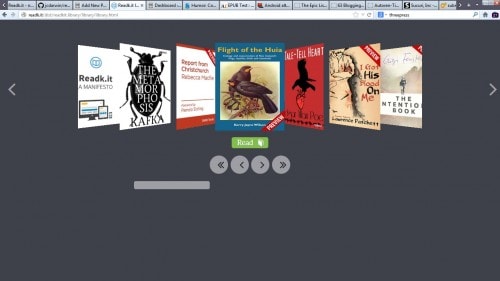
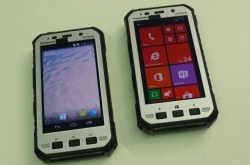
![ring_in_use_corrected[1]](http://www.the-digital-reader.com/wp-content/uploads/2014/02/ring_in_use_corrected1-250x166.jpg)
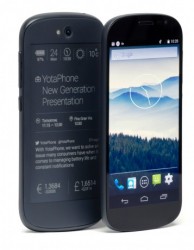
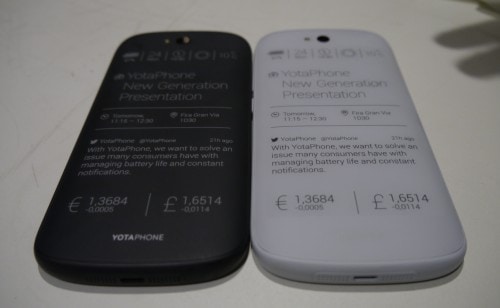
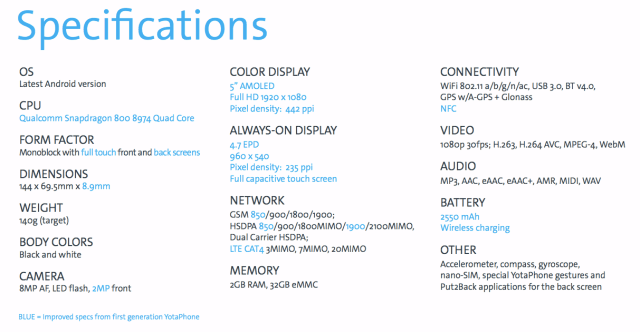
![nexusae0_word_positioning_blog3_thumb[1]](http://www.the-digital-reader.com/wp-content/uploads/2014/02/nexusae0_word_positioning_blog3_thumb1-250x204.png)
![nexusae0_spritz_thumb[1]](http://www.the-digital-reader.com/wp-content/uploads/2014/02/nexusae0_spritz_thumb1.gif)
No comments:
Post a Comment